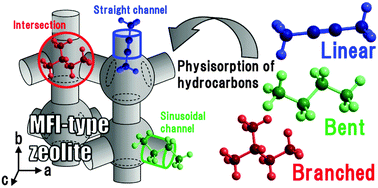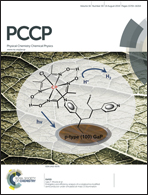Adsorption structures of non-aromatic hydrocarbons on silicalite-1 using the single-crystal X-ray diffraction method†
Abstract
The actual adsorption structures of non-aromatic hydrocarbons on the MFI-type zeolites have not yet been determined. This is due to the presence of twinning, which makes crystallographic analysis difficult. We recently overcame this problem, and now report the various adsorption structures of n-butane, n-pentane, n-hexane, 1-butene, cis and trans-2-butene, 2-butyne and isopentane on silicalite-1 (MFI-type zeolite) as determined via single-crystal X-ray diffraction. The structures were elucidated for both low and high loadings of each guest molecule in order to clarify the adsorption process. The low-loaded structures provide valuable insight into guest–framework interactions and initial adsorption behavior. The n-alkanes are initially adsorbed in the sinusoidal channel, while 2-butyne is adsorbed in the straight channel. In the case of the normal hydrocarbons, the molecular configuration (bent or linear) of the compound determines which channel is the preferred adsorption site. Bent molecules prefer the sinusoidal channel and linear molecules prefer the straight channel. In contrast, isopentane is initially adsorbed at the intersection, since the channels are too narrow to maintain the preferred distance between the framework and the bulky isopentane molecule. In the high-loaded structures, the guest molecules occupy additional sites, such that the normal hydrocarbons are located in both channels and isopentane is found at the intersection and the sinusoidal channel.

- This article is part of the themed collection: Porous Materials (FEZA 2014)

 Please wait while we load your content...
Please wait while we load your content...